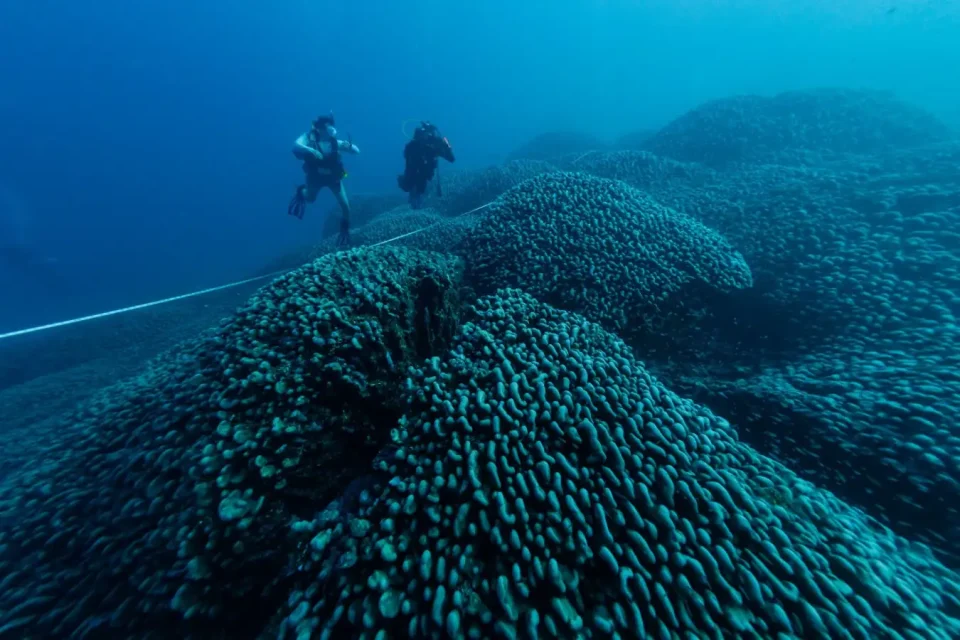Scientists have discovered the largest recorded coral in the southwest Pacific Ocean, a mega coral that consists of many interconnected tiny creatures forming a single organism rather than a traditional reef. This colossal specimen could be over 300 years old and is larger than a blue whale.
The coral was located by videographer Manu San Felix while working on a National Geographic ship. The expedition aimed to study the effects of climate change on remote areas of the Pacific. “I went diving in a place marked on the map as a shipwreck and then I saw something,” he explained. He called his diving partner and son, Inigo, to check it out further.
San Felix described the sight of the coral, situated in the Solomon Islands, as akin to witnessing a “cathedral underwater.” He expressed emotional awe at the coral’s resilience, stating, “I thought, ‘Wow, this was here when Napoleon was alive.’”
During the expedition, scientists measured the coral, which spans 34 meters in width, 32 meters in length, and stands 5.5 meters high. As coral reefs globally face significant threats due to warming oceans, this particular specimen was found in deeper waters, which may have shielded it from the elevated temperatures affecting surface reefs.
The discovery coincided with the UN climate talks COP29 in Baku, Azerbaijan, aimed at addressing climate change challenges. Trevor Manemahaga, the climate minister for the Solomon Islands, expressed pride in the newly discovered coral, emphasizing the need for global protection. “We rely mostly on marine resources for economic survival, so coral is very important,” he stated.
Small island nations like the Solomon Islands are particularly vulnerable to climate change. Manemahaga noted firsthand experiences with global warming, including more severe cyclones and coastal erosion. He called for increased financial support from wealthier nations to help develop diverse job opportunities, reducing reliance on industries harmful to coral reefs, like logging, which currently generates 50-70% of the nation’s export revenue but leads to significant water pollution.
Eric Brown, a coral scientist on the National Geographic expedition, commented on the coral’s health, describing it as “looking pretty good.” He noted the healthy coral oasis in slightly deeper waters serves as a “beacon of hope” amidst the degradation of nearby shallow reefs.
The coral species, identified as Pavona clavus, serves as a habitat for various marine life, including shrimp, crabs, and fish. Its age also provides scientists with valuable insights into historical oceanic conditions. Researchers hope to study the coral further to understand its growth patterns.
A recent report by the International Union for the Conservation of Nature found that 44% of corals inhabiting warm waters are threatened with extinction, representing a one-third increase since the last assessment in 2008.
Credit: BBC News




